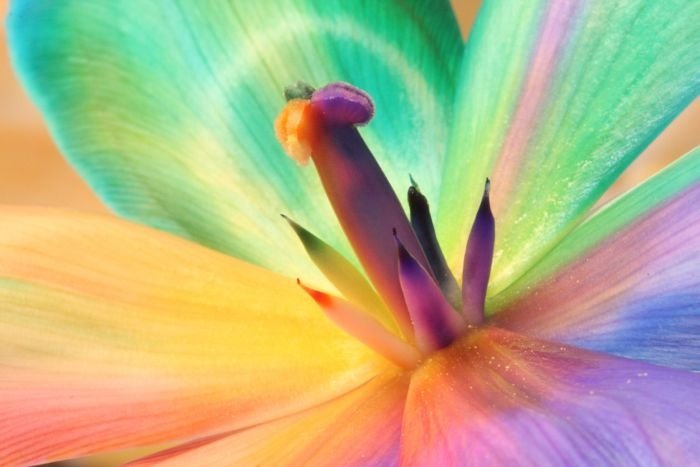|
|
Colorful Flower Photo
|
There is an interesting phenomenon which occurs when an artist uses a limited color palette: the eye tends to compensate by seeing any gray or neutral color as the color which is missing from the color wheel. For example, in a limited palette consisting of red, yellow, black and white, a mixture of yellow and black will appear as a variety of green, a mixture of red and black will appear as a variety of purple, and pure gray will appear bluish.
The trichromatic theory discussed above is strictly true when the visual system is in a fixed state of adaptation. In reality, the visual system is constantly adapting to changes in the environment and compares the various colors in a scene to reduce the effects of the illumination. If a scene is illuminated with one light, and then with another, as long as the difference between the light sources stays within a reasonable range, the colors in the scene appear relatively constant to us. This was studied by Edwin Land in the 1970s and led to his retinex theory of color constancy.
It should be noted, that both phenomena described above are readily explained and mathematical modeled with modern theories of chromatic adaptation and color appearance (e.g. CIECAM02, iCAM). There is no need to dismiss the trichromatic theory of vision, but rather it must be enhanced with an understanding of how the visual system adapts (adjusts) to changes in the viewing environment.
|
|









